Hist 387_7
The end of the Qin
and the beginning of the Han dynasty
Due to the Legalist Shang
Yang’s reforms the population of Qin was divided
into groups of five and ten households, breaking up extended family clans
and enhancing state control over the populace.
Population registers were created – the first attempt
by the state to plan and control state revenues and army recruitments by conducting
a systematic census.
This strict supervision of the population had a psychological
effect which influenced the development of religious belief systems: the bureaucracy
dominating the people through census and law in life was projected into the
neitherworld. The administration of the supernatural
realm was thought to bestow a certain life-span for everybody and recorded
one’s behavior in life for which one was to face a neitherworld
jurisdiction after death. Communication with the spirits of the other world
worked through prayer and offerings of incense and money
that was burned.
The death of the first emperor caused multiple problems
regarding the succession to the throne. Zhao Gao (?-207 BCE) placed the second son of the emperor
on the throne, thus ignoring the emperor’s wish to have his first son succeed
him. Worse even, through an intrigue he ordered the first son to commit suicide,
had chancellor Li Si excecuted,
took over his position and finally had the second son of Qin
Shihuangdi killed as well. Yet Zhao enjoyed his
strong position without opponents only for a few months: The last Qin
emperor, still a young boy, ordered Zhao to be removed and then surrendered
to the rebels who attempted to overthrow the Qin.

The burning of books in 213 BCE and the
murdering of the scholars in 214 BCE
The aversion against Confucian values
and their emphasis on the necessity to link one’s rule to the sage kings of
antiquity is said to have inspired the first emperor to conduct a burning
of books (= all Confucian Classics and historical records reporting of the
rules of the sage kings; only books on agriculture, law, divination, and medicine
were exempted), and the cruel execution of 460 Confucian scholars who opposed
him.
This report needs to be read with care for several
reasons. First, book production consisted of preparing bamboo slips, attaching
them to another and inscribing them, a process which limits the amount of
copies produced of books in the first place.
And though punishments like beating or fining were common practice
for instance towards officials who had failed to keep the laborers assigned
to them under control it remains questionable whether the murder of the scholars
actually took place or is an exaggeration on the side of historiographers
in order to denounce Qin cruelty. They may have
used this description for the justification of the overthrow of Qin
by the Han, very much like the Zhou legitimized their conquest of the Shang: the evils of Qin made a the
overthrow and a transfer of the Mandate of Heaven in evitable.

The burning of books and the torture of Confucian scholars
Archaeology helps to put Han historiography
in perspective: the tomb at Shuihudi of a Qin official named Xi (d. 217 BCE) included 1.155 documents
written on bamboo slips. They included texts on divination and law. The law
texts speak a different language than what is purported as ‘lawless cruelty’
by Han historiography. Though Qin punishments were
harsh (forced labor, amputation, cutting off the nose, tattooing, marking
the face etc.) there was a systematized law code for an array of different
crimes which seems to have been followed with some care.
The founding of the Han

Map of the Han Dynasty
After a dramatic victory over his contender,
the noble Xiang Yu of


Portraits of Liu Bang / Han Gaozu
One of the first measures in office
was that Liu Bang created a new nobility, a class
that the Qin had eliminated not without reason. Of common origin himself
he instantly enfeoffed his brothers and sons as
kings and 150 of his followers as marquis’: the re-establishment of a feudal
system. One third of the Han territory including the capital remained under
his control, the rest was ruled by his relatives.
The Han government
- central
administration:
emperor
tax collectors army supervisor government officials
- local administration:
tax collectors,
population registration, justice, maintaining infrastructure, recommendation
of candidates for office
Foreign affairs
The northern neighbors became and remained
an oppressive force. Throughout history it should turn out to be easier to
‘buy peace’ from the Xiongnu and Xianbei
by establishing friendly ties through sending gifts such as textiles, wine,
and princesses than fighting back their endless attacks.
When Gaozu died in 195 BCE,
his wife Empress Lü, took over as a regent for their 15 year old son. His ‘reign’
lasted only eight years. After his death his mother continued to reign for
two other infant emperors who died after suspiciously short lifespans. When Empress Lü finally
died herself in 180 BCE, the imperial Liu clan tried to get rid of as many
Lü relatives that had come to high ranking positions
as possible.
A stately tomb in the Han
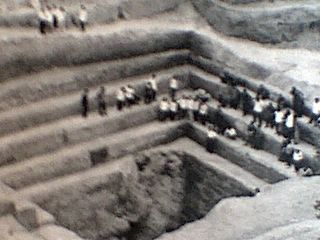
Excavation in progress


Reconstruction of Lady Dai's coffin
Lady Dai’s tomb at Mawangdui
- perfectly preserved corpse (1,54 m tall;
34,3 kg)
- inventory of funerary objects written on bamboo
- grave goods: 154 lacquer
vessels; 51 ceramics; 48 bamboo suitcases with clothing and household goods
- 40 baskets filled with 300 replicas of gold pieces;
100,000 bronze coins
- food: rice, wheat, barley,
millet, soybeans, red lentils
- recipes for – vegetable
stew with meat
beef & rice stew
dog meat & celery stew
deer stew
fish stew
bamboo stew
seasonings: salt sugar, honey, soy sauce, salted beans
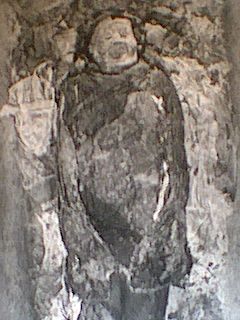 Lady
Dai
Lady
Dai
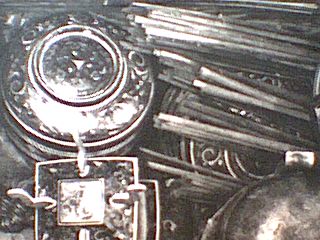
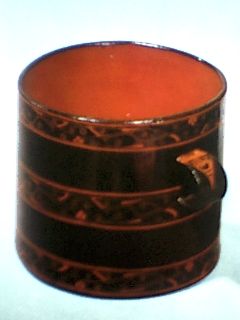
Lacquer cups and fodd containers
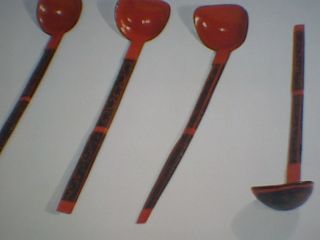

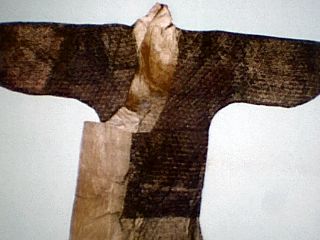
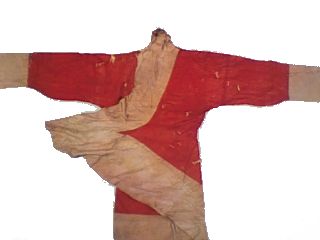
Dark and red gown

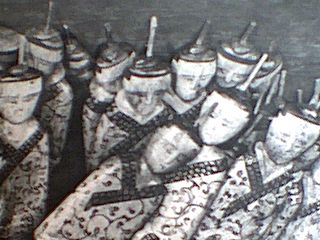
Gloves
and wooden figurines (servants)
The burial banner of Lady Dai
 Burial
banner
Burial
banner
Top section:
- realm of the immortals,
entrance guarded by gods of destiny, keeping record of lifespan
- moon with toad and
rabbit
- sun with (three-legged)
raven
- Queen Mother of the West/: reigns the realm of
the immortals in the

Middle section:
- Lady Dai’s body soul in her tomb; feast with
ritual vessels, offerings (chopstocks placed upright
in the bowl)
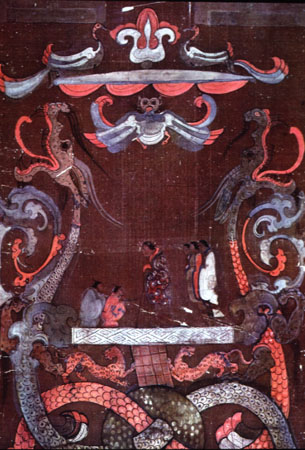
Lower section:
- shrouded body: death
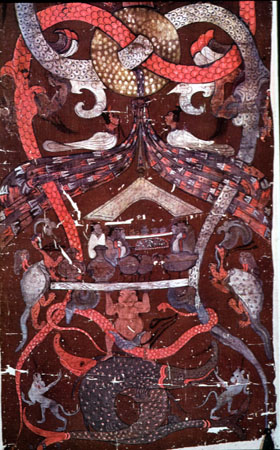
The library of Lady Dai’s and King Li Cang’s son, a military official (d. 168 BCE)
- Book of Changes (Yijing)
-
Book of the
Way and Virtue (Daodejing)
-
Intrigues of the Warring States
-
Texts on law, fortune telling, sexual techniques;
three maps
The reign of Han Wudi
(r.140-87 BCE)
After Empress Lü
died in 180 BCE two emperors had come to the throne and ruled partly under
the supervision of regents; during this period the power was taken out of
the hands of the relatives of Empress Lü and the
number of feudal kingdoms was considerably reduced.
Han Wudi was to become a
powerful ruler who reigned for 50 years. He came to the throne aged 15 and
ruled for the first nine years under the supervision of regents. When they
died, he remained the sole
authority until his own death in 87 BCE. He relied on advisors
though, the most influential of whom was the philosopher Dong Zhongshu (175?-105? BCE). His ideal
of ruling saw the position of the emperor as a servant to his state. The Confucian
vision of a benevolent rulership and mutual responsibility
of ruler and subjects formed the basis of his philosophy of statecraft.
Dong saw the larger pattern in which every human including
the ruler was integrated, as dominated by the complementary forces of yin
and yang and the alternating dominant phases of the five elements: wood, fire,
earth, metal, and water.
In order to disseminate Confucian learning, Han Wudi set up an academy for scholars who became experts of
the Five Confucian Classics which they taught to selected students, a group
that then provided the candidates of which the emperor selected new officials.
Han Wudi chose most of his officials from low-ranking
families, securing their boundless loyalty founded on gratitude.
Expansionist politics
The emperor consolidated power by reducing
the feudal kingdoms and pacifying border regions in the West (
Sima decided to
live with the shame but fulfilled the promise he
had given his father on the deathbed: He completed the historical records
his father had begun. The amazing intellectual accomplishment remained the
model for all dynastic annals.

Expansion of the Han Empire - Expansion of the Xiongnu heartland
After Han Wudi’s death a
period of changing child emperors dominated by changing regents determined Han
politics.
Economic problems
Revenues never quite matched expenses
during Han Wudi’s rule. Therefore monopolies for salt and iron were set
up, later extended to copper, bronze, and alcohol. While lucrative for the
state, the monopolies were severely criticized by Confucian scholars as burdens
on the people recruited to work for them and pay for the products. In addition the scholars warned the officials
not to engage in trade, especially disgraceful was
in their considerations the trade with the neighboring ‘barbarian’ and aggressive
Xiongnu. The officials believed that trade was bound to corrupt
the officials. Yet trade had already become an integrated part of society
and propelled social mobility. Merchants had to put up not only with the fact
that their profession was despised, but also because they paid 100% more taxes
than artisans for property and transport vehicles such as carts and boats.
(e.g. for a property worth 4,000 coins merchants
paid 240 coins, artisans 120). Land could be traded and as time went by large
estate owners were landlords who either had been enfeoffed
with land or had increased their property by buying continuously. As true
lords of the communities landowners tried to evade taxes wherever possible.
Therefore the government tried to limit landownership, a measure that was
only effective during the short period of the rule of former chancellor and
formidable diplomat Wang Mang and his New (Xin)Dynasty
(9-23 CE).
Wang Mang Interregnum
Wang Mang
intended to create the ideal society of the Zhou as portrayed by Confucius.
He started to limit the possession of land and abolished slavery. A politically
well versed strategist and diplomat he linked his ideals to the past as captured
in the Rites of Zhou. He
abolished the trade of slaves (serfs) and the trade of land. Instead he installed
a system of land distribution. His measures were reversed though when the

Changes of the Yellow River throughout Chinese history; currently the stream
flows into the sea south of the city of Tianjin and north of the Shandong
peninsula
The flooding left many people without land or income. Under
the leadership of religiously inspired 'saviours', one of them a woman called
Mother Lü, uprisings contributed to the political destabilization. Leaders
of the Han imperial Liu-clan formed an alliance with the 'Red Eyebrows', an
enormously strong army that grew out of an uprising led by Mother Lü,
in order to defeat Wang Mang. [They painted their eyebrows red in order to
be able to distinguish between friend and enemy in war.] Wang Mang's dynasty
ended with his death and the Liu's founded the Later Han Dynasty (25 C.E.),
but now they were in the position to be threatened by the 'Red Eyebrows' themselves,
who wanted to have their own state. It took two more years until they defeated
the 'Red Eyebrows' completely. They could accomplish this only with massive
support by wealthy landholders who had their own private armies.
The devastation caused by the flooding was one more reason for the migration
wave to the south. The threats by the neighboring Xiongnu was the other force
that made thousands of families, aristocratic or poor, leave their land and
homes and try to find a new home somewhere in the south, where soon a new
culture composed of local traditions and influences brought along by the immigrants
flourished.
The capital was moved to
His daughter Ban Zhao (ca. 45-120 CE) wrote
the most famous book on the education of girls, titled ’Lessons for Women’
[or "Admonitions of the Instructress to the Court Ladies"];
she had been married at the age of 14 and later, after her husband had died
and her children were coming of age, served as tutor and advisor to empress
Deng.
The 'Admonitions for Women' which she wrote when she was 54, is an
important source of information on women's life as well as the ideals and
standards set for them in their education, which required that women should
be able to read and write since educated [elite] women were considered 'capital'
for the family in marriage negotiations; in addition: virtue and physical
perfection (report of Maid Wu on the future Empress Liang Nüying, d.
159) were requirements added to the concept of an ideal woman which consisted
of folowing the four demands of:
1. womanly
virtue: chastity and loyalty
2. womanly speech: no chatting
3. womanly bearing: high standard of personal hygiene and hygiene in household
organization
4. womanly work: weaving, sewing, food preparation
The low status of women is also symbolized in a rite performed three days
after birth. According to Ban Zhao the following acts are performed:
1. the baby girl is laid below the bed to indicate her low status within the
family
2. she is given a potshed as a toy symbolizing the hard work she has to be
committed to throughout life
3. three days after birth she is presented to the ancestors to introduce her
as a new future servant to the ancestors
The period of three days between birth and the introduction of the new family
member to the ancestors was often the time in which female infanticide occurred
if the woman/family was not capable of raising a(nother) daughter.
Ban Biao's son, Ban Gu
(32-92 CE) excelled in the composing of rhapsodies and continued to write
the ‘History of the Former Han’, begun by his father. The work was completed
by Ban Zhao after Ban Gu’s death.

Idealized image of Ban Zhao writing calligraphy